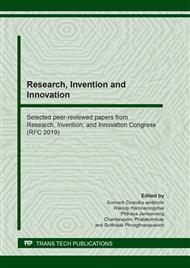p.253
p.261
p.268
p.276
p.286
p.294
p.303
p.309
p.317
Electrically Conducting Poly(Pyrrole-co-Para-Phenylenediamine) as Potentiometric Transducers in Urea Biosensor Fabrication
Abstract:
This research has focused on the fabrication of a urea biosensor based on electrically conducting poly (pyrrole-co-para-phenylenediamine) (PPy-co-PPD). High amount of free amino groups (-NH2), originating from PPD, in the PPy-co-PPD structures made them suitable for chemical immobilization of urease. The PPy-co-PPD films were prepared by one-step electrodeposition of the mixture of pyrrole and PPD. It was found that the morphology and conductivity of the PPy-co-PPD films were influenced by amount of PPD in the copolymer. Increasing amount of PPD in the copolymer led to decreasing electrical conductivity. Greater particle size and less packing were observed for the copolymer with high PPD content. XPS revealed the existence of free amino groups (-NH2) on the surface of PPy-co-PPD films. The PPy-co-PPD films were further subjected for covalent immobilization of urease, selective catalytic enzyme for urea. Potentiometric responses of the PPy-co-PPD films showed the highest sensitivity of 47.3-54.2 mV/pUrea (r2 > 0.99) over the urea concentration ranging from 0.5-10.0 mM (pUrea 2.0-3.3). Detection limits and response linearity were in the normal range of urea level. Response time was approximately 10 seconds. Leaching test revealed that the PPy-co-PPD film showed 83% reduction of urease leaching out of the PPy-co-PPD film during measurement, compared to the PPy film.
Info:
Periodical:
Pages:
286-293
Citation:
Online since:
August 2020
Authors:
Price:
Сopyright:
© 2020 Trans Tech Publications Ltd. All Rights Reserved
Share:
Citation:


